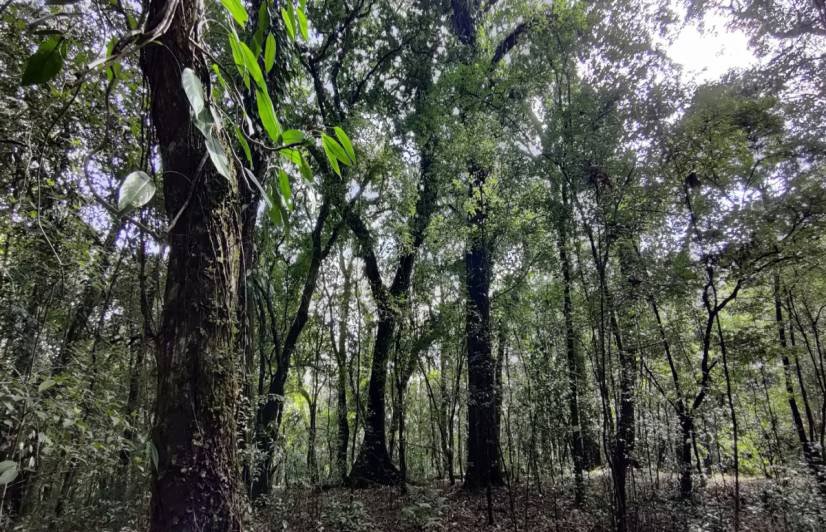
Faith, Conservation, Tourism Meent In Sacred Forest Of Meghalaya
SHILLONG, (IANS) – Twenty-five km from Meghalaya’s capital city Shillong lies the pristine forest of Hima Mawphlang (Kingdom of Mawphlang), where over 450 species of trees, herbs, and wildlife, including clouded leopards, monkeys, deer and frogs of the genus Rana, thrive. This is no ordinary forest, but a sacred grove, where belief and conservation go hand in hand.
Labasa, the deity that governs the law-kyntang (the Khasi equivalent of sacred grove), can both protect and punish. Take a twig or pluck a leaf, and you are inviting the deity’s wrath and bad luck. This belief has thrown a ring of protection around the nearly 800-year-old forest spread across 193 acres.
Located in East Khasi Hills district, the forest belongs to the native Khasi tribe. Its residents still identify themselves with the ancient Kingdom of Mawphlang and even now have a king elected democratically.
The office of Hima Mawphlang decides on all matters related to the sacred grove. The responsibility to protect it lies with the men of 12 clans living in villages in the vicinity.
The forest is divided into three parts: the central portion where all rituals take place; laittyrkhang located near the hamlet; and an extension opposite the main forest. Though an ecotourism hotspot, tourist entry is restricted to only certain portions of the forest.
Since time immemorial, villagers have been performing ritualistic worship of the forest deity in the presence of an important elder or the king, before taking any major community decisions, before a major event, or during disease outbreaks. Such events used to happen inside the sacred forest before it was shifted to a nearby hill.
Bulls were sacrificed in the last known ritual held inside the forest during a massive famine in 1959. Nowadays, only hens and roosters are sacrificed in an annual ritual held before the monoliths that dot the landscape, which also serve as route markers.
It is believed that the deity used to appear as a clouded leopard or a snake when the elders sought permission during the sacrificial ritual, standing in front of the monoliths.
“Leopards and snakes are highly regarded here. Leopard will come to the rescue in times of danger, while the snake is a mediator that shows up when something is wrong,” noted ecologist Tambor Lyngdoh said. He said stories about those who were punished by turning their heads backward still do the rounds in the region.
“In the 1970s, some Army personnel from Shillong went to Mawphlang to gather wood from the grove. When loaded in trucks, the engines did not start. While checking the truck’s condition, the drivers began to feel uneasy and weak. Soon, they returned to the headquarters empty-handed. The next morning, the brigadier reached Mawphlang on inspection and met the chief of the clan, who suggested unloading of wood in the grove itself. Once his advice was heeded, the engines miraculously started functioning again.”
In the distant past, the people of Mawphlang were mostly dependent on the forest for essentials. Even before there was a religious system, people believed in one God: Mother Nature. This practice continues even today. Residents believe that in the sacred grove resides the wisdom of their forefathers and a way to carry forward their heritage and establish a legacy.
“Nature is given the highest regard in our community. Before starting anything auspicious, we pray to nature. We know we cannot survive without nature. No one is allowed to collect even firewood from the forest. We grow everything we need, including vegetables, fruits, and trees for firewood, in our farmlands,” Tambor elaborated.
A set of rules is in place to manage guesthouses in the area. For building homestays, permission from the village headman is necessary. Tourists should not roam around the village late in the night or visit houses in the locality without the headman’s permission. “Conservation is not a one-person’s job. Therefore, the village panchayat actively works with the Office of Lyngdoh. An annual or half-yearly public meeting is held, where attendance of at least one person from every household is mandatory. Executive committee meetings are held frequently,” said Auspicious L Mawphlang, the headman of Nogrum.
Mawphlang’s love for nature has set an example for the rest of Meghalaya with others following suit.




